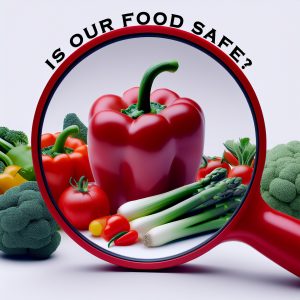The 1990s gave us high-waisted jeans, Beanie Babies, and the Macarena’s catchy moves, but the FDA Food Code stole the show for restaurants. This pivotal regulation transformed how eateries source, store, prepare, and serve food, slashing risks of foodborne illnesses like Salmonella, which claimed 238 lives in the US in 2019. More impactful than a dance craze, it continues to keep diners safe.
The Law
The FDA was established in 1906 with the passage of the Pure Foods and Drugs Act. It was designed to protect consumers from unsafe and mislabeled food and drugs, and to promote public health. In 1993, the FDA developed the Food Code to “provide(s) effective controls as a means of reducing the risks of foodborne illnesses within retail establishments, thus protecting consumers and industry from potentially devastating health consequences and financial losses,” as defined by the US Food & Drug Administration (FDA).
Before the Food Code, food safety requirements varied widely between states, creating inconsistencies and confusion. The Food Code offered a consistent, science-driven framework that jurisdictions could adopt to ensure uniform protection against foodborne illness.
Since its inception, nearly all U.S. states have adopted some version of the Food Code, showing its effective reach in establishing consistent national food safety standards. According to a study by the Centers for Disease Control (CDC), states that adopted provisions from the FDA Food Code had lower rates of foodborne outbreaks. These provisions include (1) requiring staff to stay home for at least 24 hours after symptoms subside, (2) enlisting a certified food protection manager, and (3) prohibiting bare-hand contact with ready-to-eat foods.
Fridge Rules

With the FDA Food Code setting a strong foundation for safety, let’s zoom in on a critical piece of the puzzle: proper refrigeration. Refrigerators are so common nowadays, most people think of them as simple devices used only to keep food cold and fresh for longer periods of time. And while this isn’t exactly incorrect, in commercial kitchens, they play a bigger role in food safety than just chilling your leftovers. Ingredients can be exposed to harmful bacteria if they’re not safely stored or correctly organized, and refrigerators provide opportunities to organize and store your food in the safest way possible. For example, it matters where you store your food (i.e., top shelf, bottom drawer), and how (i.e., covered or sealed). These silent kitchen contributors are fundamental to preventing foodborne illness and ensuring compliance with safety standards.
The FDA and the USDA offer some helpful tips on proper food storage in refrigerators, such as:
- Avoid overpacking the fridge so the cold air can circulate properly and keep food at the right temperature
- Wipe up spills immediately to reduce the growth of bacteria
- Keep food sealed/covered to avoid cross-contamination
- Monitor expiration dates and discard foods past their “use by date
- Clean and sanitize fridge often – bacteria or mold can grow on surfaces and contaminate nearby food.
- Always refrigerate perishable food within 2 hours (1 hour when the temperature is above 90 °F)
- Keep fridge at 40 °F or below and freezer at 0 °F or below
- Cook or freeze fresh poultry, fish, ground meats within 2 days; and beef, veal, lamb, or pork, within 3 to 5 days
These may seem like small details, but little things can help avoid big consequences.
Importance of Food Safety Training

While proper refrigeration practices are crucial, they’re only as strong as the team behind them. After all, what good is a food safety protocol without education?
Employees need continual training in food safety to recognize critical tasks and identify risks. Knowing how to properly handle raw ingredients and prevent cross-contamination will go a long way towards keeping your customers safe, protecting your brand’s reputation, not to mention avoiding legal action and medical liability.
Equip your staff with CrewSafe’s vibrant educational materials, like our 2025 Food Safety Poster, spotlighting proper refrigeration and storage techniques. For over 30 years, CrewSafe has empowered restaurants to protect customers and preserve reputations. Contact us today to get your hands on our comprehensive training programs and safety solutions. Let us help elevate your food safety game and ensure compliance with confidence!
Sources
- CDC (2025) – Estimates: Burden of Foodborne Illness in the United States | Food Safety | CDC
- CDC (2024) – Food Code Adoption | Restaurant Food Safety | CDC
- U.S. Food and Drug Administration (2019) – Part I: The 1906 Food and Drugs Act and Its Enforcement | FDA
- U.S. Food and Drug Administration (2020) – Refrigerator Thermometers – Cold Facts about Food Safety | FDA
- U.S. Food and Drug Administration (2020) – Benefits Associated with Complete Adoption and Implementation of the FDA Food Code | FDA
- USDA Keep Food Safe! Food Safety Basics | Food Safety and Inspection Service

